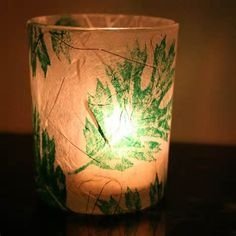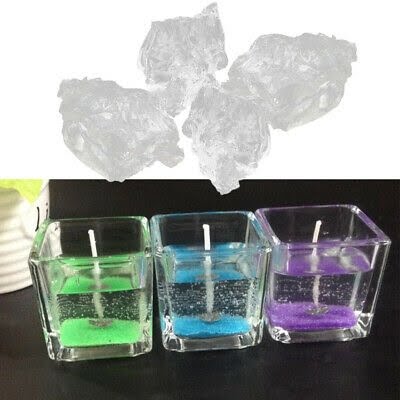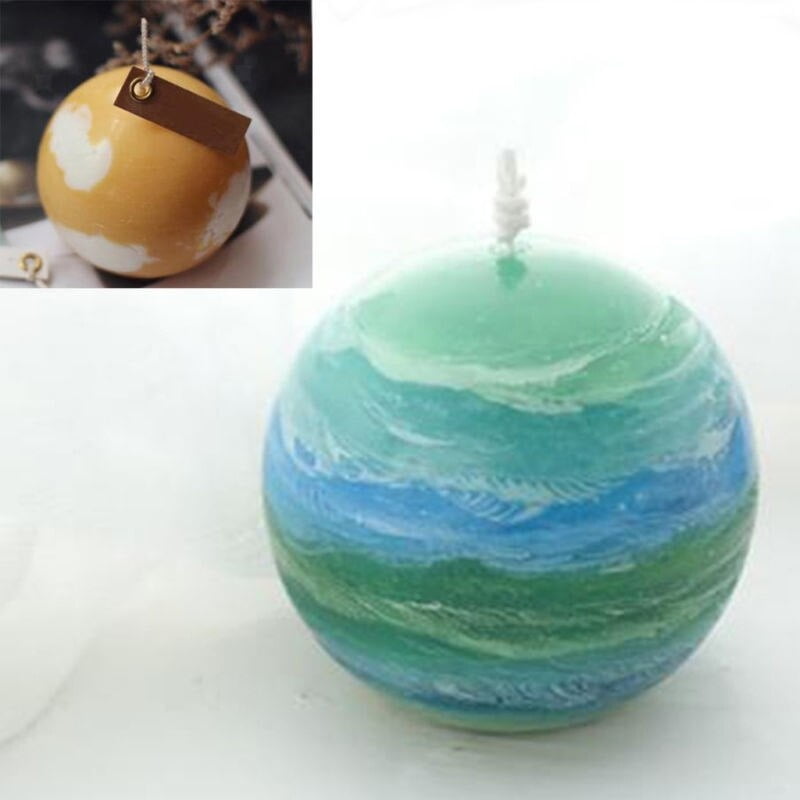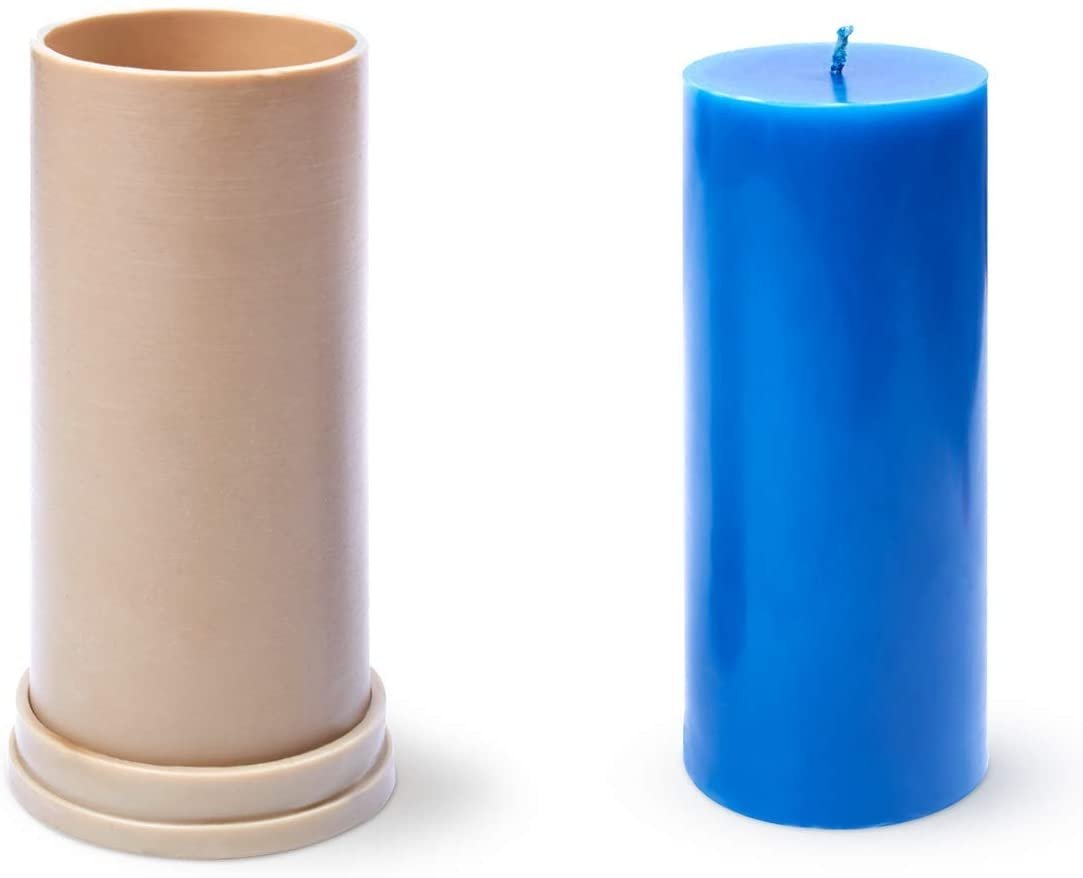When it comes to making environmentally friendly candles, there are a variety of ways individuals and businesses can reduce their carbon footprint while still producing products for customers to enjoy. This involves switching from conventional materials to plant-based alternatives, such as organic cotton wicks, and soy or beeswax instead of petroleum-based paraffin wax. Additionally, by using natural herbs, essential oils and dyes that are free from chemicals will help produce healthier candles with eco-friendly ingredients.
With the quality of the environment being top priority for many consumers now more than ever before, opting for these sustainable materials can make a huge difference in making eco-friendly candles. For instance, when paraffin is burned it releases black soot which is both hazardous to human health and damaging to air quality.
Organic cotton wicks are much safer as they do not emit toxins into the air when burning – perfect for those looking for an alternative that isn’t harmful to human health.
Similarly, soy wax is sourced from plants which can be grown organically without any chemicals or pesticides and has been found to burn longer than its counterpart. It also helps create a more even wax pool and casting process while offering good adhesion with the fragrance oil added during production.
Moreover, while it might cost more initially to produce eco-friendly candles made from natural ingredients – alternatively these produce lower emissions of toxic fumes and leave less of an overall environmental footprint than those made with nonrenewable resources; making them a great option for candle makers looking to go green.
From packaging created using recycled materials like paper and glass instead of plastics to reducing waste throughout the manufacturing process – using sustainable solutions make environmentally efficient practices possible which has never been more important in preserving our planet for future generations ahead.
Greening Your Home
Candles can bring a warm and cozy atmosphere to any home. But not all candles have the same impact on the environment. By making eco-friendly candles, you can reduce your environmental footprint while still enjoying the moments created by gentle candlelight.
Using Natural Wax
Natural wax is a renewable resource that comes from plants, such as soybeans or coconut oil. It is biodegradable and can easily be disposed of without harming the environment. This type of wax also burns much cleaner than typical petroleum-derived paraffin waxes which contain toxins and carcinogens, releasing volatile organic compounds into the air during burning.
Choosing Natural Fragrances
It’s important to choose soy wax candles with natural fragrances like essential oils or botanical extracts for a more natural scent than those that use synthetic fragrances. Natural fragrances can offer health benefits for allergy suffers without the harsh chemical components that often come with synthetic fragrances found in traditional store-bought candles.
Reuse Containers
When it’s time to buy a new candle, reusing containers is another great way to go green when it comes to home fragrance products. You can find various styles of containers at your local craft or thrift store that are perfect for creating your own unique eco-friendly candle designs
- Benefitsof Natural Wax:
- Renewable resource
- Biodegradable
- Burns cleaner
- Benefitsof Natural Fragrances:
- Allergy relief
- Malleability – Allows you to customize aroma combinations.
- Easily disperse – Quickly fill up space so you don’t have too much strong fragrance.
What Types of Eco-Friendly Waxes are Available?
Soy wax is an organic substance that is produced from the oil of soybeans. It produces a soft light when burnt and performs exceptionally well when combined with essential oils. Because it is naturally derived it can be broken down much easier than other petroleum-based wax products, allowing it to be reused in order to reduce the amount of waste generated by candle-making.
Coconut Wax
Another eco-friendly wax option is coconut wax which is both vegan-friendly and delivers an excellent burn quality that leads to less smoke, less oil residue, and a higher melt point than other types of waxes. Coconut wax provides a slightly lower melting temperature than other plant-based options due to its combination of natural botanical ingredients.
Not only does it perform really well during burning but has also made a notable impact on natural insect populations as the coconuts are treated with an organic pesticide instead of harmful chemicals which makes a big contribution to protect the environment.
Hemp Seed Wax
One of the latest additions to the environmentally conscious candle market is Hemp seed wax which allows for large candles with fewer melts over time whilst creating significantly less residue without scarifying any performance when compared to other plant-based candles.
This new wax offers beeswax enthusiasts who are more focused on sustainability with an alternative option for their home décor needs and gives those looking for a vegan friendly solution something viable too amongst their candle making endeavours as hemp continues to grow in popularity due environmental benefits outside of just being used for candles.
If you’re interested in adding environmentally friendly principles into your candle inventory then research into biodegradable choice such as these three may be worth considering due their easily sourced natural materials and easy burn characteristics which all make them worthwhile additions to any sustainable business approach towards candle making.
Looking for Sustainably Sourced Wicks
Exploring sources of wicks that align with an eco-friendly candle-making goal can be a challenge. Wicks add to the aesthetics and also ensure that your candle is a safe burning material. If you’re wanting to make sure your candles are environmentally friendly, there are some great resources available to help you find the perfect wick for you and your goals.
One excellent source of sustainable wicks is suppliers who specialize in creating wicks made from organic materials. These suppliers have carefully sourced materials that have been grown without fertilizers or pesticides, and use natural materials such as cotton and hemp to create their wicking products. They also strive to minimize their impact on the environment by producing items designed for long-term reuse as well as using production methods and processes that use fewer resources.
Another option for getting sustainably sourced wicks is shopping locally at arts-and-crafts stores. By shopping local, you’re helping to support small businesses, while gaining access to locally produced items that often use more diverse materials in their production processes than big box suppliers.
Shopping local can help contributors consume resources with an eco-consciousness which may ultimately create positive environmental changes – from reducing plastic packaging waste production, to incentivizing companies to think more deeply about how they collect and prioritizes sustainability issues into their supply chain management process. When looking for sustainably sourced wicks at local businesses, ask questions about where the material came from and how it was processed in order to get the best results for your eco-friendly projects.
Overall, there are a variety of ways for customers to look for sustainably sourced wick when attempting an eco-friendly candle project. From sourcing organically grown materials from specialized suppliers, or finding products made with unique materials through local stores – sustainable options are available when it comes time to decide on the perfect type of rick for your project.
Selecting Sustainable Packaging
Traditionally, candles have been thought of as a source of light, and more recently the pleasant aroma made from certain kinds of wax. But in recent years, people have become more aware of the need to use products that are best for our environment. To this end, eco-friendly candle makers have taken great efforts to ensure their products are both pleasing to our senses as well as being sustainable and reducing our carbon footprints.
When it comes to choosing packaging for candles, some materials are better than others when considering environmental impact. A range of potential options exist such as:
- Wooden Containers
- Recycled Paper Containers
- Bamboo Containers
- 100% Recyclable Plastic
Wooden containers are quite popular for eco-friendly candles due partly to their recyclability and natural beauty. Wooden boxes, jars or other encasements can be used giving your candle a pleasant scent while also adding to its aesthetic appeal. Although wooden containers may not be very affordable compared with other options they will last longer meaning you get good value for money and care for the environment too.
Another popular option is recycled paper containers; they are a great choice for anyone looking to provide a completely sustainable option without deteriorating quality or aesthetics. Paper containers can come in many shapes and sizes making them perfect for various types of candles such as soy wax or beeswax ones.
They often look elegant in their variety of colours which makes them appealing both functionally and aesthetically. The environmentally friendly thing about these is that there is no requisite washing or preventing rust unlike plastic – so you save a lot on water recycling too.
For those looking for something slightly different from wood or paper could opt for bamboo containers which are particularly suitable if the candle will be given as a gift. Bamboo has an alluring appearance that has long been associated with quality craftsmanship giving any product in this type of packaging an added air of sophistication compared to some other alternatives.
Bamboo supposedly has some ecological benefits by growing at an extremely rate and even cleaning the air around it while doing so – making it highly renewable and biodegradable; thus being an excellent choice when considering sustainability.
Essential Oils
When it comes to using essential oils for scented candles, there are a few factors to consider; aroma type, scent strength and diffusion. Essential oils come in several categories – floral, herbal, woodsy/musky and spice. They vary widely in strength, with some requiring only a small amount to make an impact on the overall smell of the candle.
The type of essential oil that is used will depend on the desired effect – a strong fragrance that hangs in the air for a long period of time or one that diffuses quickly without lasting too long. Below we have listed some examples of popular oils that can be used to create scent when making environmentally friendly candles.
- Jasmine: This has a distinct yet subtle aroma and produces an uplifting and purifying scent. It’s calming properties make it great for relaxation.
- Lavender: A light but alluring fragrance with floral notes. This provides a soothing aroma and great for reducing stress levels.
- Orange:A zesty light fragrance with citrusy notes. Stimulating and energizing, this is perfect for creating upbeat moods.
- Sandalwood:A deep earthy aroma with musky undertones. Excellent for bringing mental clarity and evoking feelings of peace.
- Ginger:A sharp spicy scent that invigorates mind and senses. Good option if you would like an awakening effect from your candle.
Crafting the Candle
Making your own candles can be a fun and informative experience. It’s also eco-friendly and sustainable, as you need only a few basic supplies which are all widely available. The most important part of the process is getting the right wicks for the size of your candles, and then ensuring you have enough wax to fill them.
Once you’ve got all your supplies together, start by measuring out your wax into a double boiler or heat-safe dish. Then, heat it on low until it has melted completely. Depending on the type of candle you’re making, add in essential oils or colouring for added scent or look.
Once everything is mixed in properly, wait for the wax to cool down until it’s just slightly warm before adding in the wicks. Do this by tying one end of each wick around a pencil and putting that across the tops of each candle mould. This will make sure that they remain upright as you fill them with wax.
Once everything is ready to go, gently pour your melted wax into each candle mould slowly and evenly so that none overflows. Update any displaced wicks during this step too if needed. After this, let the newly formed candles cool down before popping them out from their moulds – this could take up to an hour.
Finally once they’ve been left untouched for at least 12 hours (or longer in colder temperatures), trim off any excess on top of each wax using a pair of scissors or sharp knife before lighting it up. Since these are made from natural materials and oils with no toxins whatsoever, they will burn very cleanly with no black smoke clouding up the room or giving off unpleasant odours – perfect for anyone looking for a more environmentally friendly option.
Overview of the Standards of Being Eco-Friendly
Being eco-friendly requires being conscious of the environment and taking steps to reduce any negative environmental impacts. Candles are a common decorative item used throughout the home, so it’s important to know how to make them in an environmentally friendly way. The following is a breakdown of the components that contribute to making a candle more eco-friendly:
- Wax
- Candle containers
- Fragrance choices or color additives
- Packaging materials you decide to use.
1. Wax
When deciding on wax for your candles think about choosing 100% natural ingredients. This could include beeswax, soy wax, vegetable wax or palm oil based waxes. Choosing an all natural wax means no toxins can be burned off when the candle is lit or leaking out into our environment.
Soy wax is also biodegradable which mean it will disintegrate and not damage the environment after disposal. If you choose paraffin candles opt for wickless crystal melts since they’ll produce less toxins than regular paraffin candles when burned.
2. Candle Containers
Opt for glass containers as opposed to plastic ones when possible since glass can be recycled and reused and isn’t harmful to nature. You can even choose biodegradable containers such as bioglass™ made from renewable resources like sugarcane fibers and bio‐based polymers, allowing them to break down harmlessly into water, carbon dioxide, and biomass within 45 days of disposal in a compost pile.
You may decide on reusable containers such as mason jars instead of purchasing new ones each time meaning less waste is created over time through refillng these containers with new ingredientsion.
3. Fragrance & Coloring Choices
Opt for fragrance oils with essential oil blends which won’t emit any potentially harmful toxins into your home when burning eith ecandles. Additionally, use botanical dyes instead of syntheic dyes if you wish oyour candleso have color added during the production process as this makes sure no harsh chemicals are sneaking their way into soemone’sheme living space.
EcoCert certifications should also be looked out for when searching ffor fragrances as this will ensure tey meet standards laid out by European consumer watchdog organizations disallowing any potentially dangerous ingredieits ofrom being used in teh fragrance blends.
Disposal
The first step to proper candle disposal is to make sure that the candle is indeed environmentally friendly. Eco-friendly candles are typically comprised of natural waxes such as beeswax or soy, which break down in nature in eco-friendly ways, avoiding the buildup of non-biodegradable materials. Candles made of petroleum-based paraffin wax can be considered harmful to the environment and are best recycled or disposed of in accordance with local waste management regulations.
Once you have established that your candle is indeed an eco-friendly one, there are a few options available for safe and sustainable disposal. Some popular and simple strategies include:
- Reusing the jar or container – An empty glass jar or tin makes a great storage option for all sorts of small décor items such as buttons, beads, coins and more.
- Recycling – Many cities have programs dedicated to recycling glass, metal and plastic containers; some even accept waxed paper bags.
- Composting – If your candle wick is made from either cotton or bamboo fibers it can be safely composted.
Additionally, you may wish to consider repurposing the end product into something new such as soap. Depending on the type of wax used in the candle’s creation, melting down what’s left and mixing it with other ingredients like baking soda and essential oils can create just about anything from body bars to massage balms.
Finally, if all else fails you may want to consider donating any leftover material to arts & crafts classes at local schools or community centers. This final solution not only gives life to old products but helps foster creativity within communities around us.
Conclusions and Overall Assessment
The commitment to making environmentally friendly candles presents numerous benefits. Primarily, this type of candle burning helps reduce the output of noxious fumes created by traditional waxes, while using natural resources. Secondly, the candle-making process does not require mass production and can be done on a much smaller scale that consumes far less energy than traditional manufacturing processes do.
Thirdly, producing eco friendly candles can be a much more cost-effective option than purchasing them in stores since the ingredients needed are often less expensive and more abundantly available. Finally, candles made with biodegradable waxes contribute significantly to keeping our planet clean as the materials used are designed to break down and not accumulate in landfills or the environment.
When it comes to using eco-friendly candles, there are several methods of reducing waste that can help keep pollution levels low. For starters, use soy or beeswax candles instead of paraffin or other petroleum-based products as these waxes contain fewer toxins and create less soot when burned. Secondly, always trim your wicks after each burning session and look for non-metal wicks which don’t contains zinc or lead as these are toxic when burned.
Finally, strive for quality over quantity; look for artisanal brands and work with local artisans to buy sustainable goods that you use frequently instead of buying cheaply made products produced overseas. This will help keep money local and increase quality control so that you get what you pay for rather than items that will burn out quickly due to lower quality materials being used in their production process.
In conclusion, using eco-friendly candles provides numerous advantages – both environmental and economic – that make it a great choice for conscientious consumers who want to reduce their carbon footprint at home. By opting into greener options like soy or beeswax based products we can ensure our air stays clean while also providing an outlet for artisans/local businesses to support their respective craft in an ethical manner too.
Ultimately these tips will go a long way towards helping us continue living sustainably without hindering our luxury lifestyle habits like enjoying fragrant aroma therapeutically induced from burning scented candles at home.

Welcome to my candle making blog! In this blog, I will be sharing my tips and tricks for making candles. I will also be sharing some of my favorite recipes.





